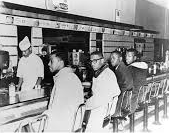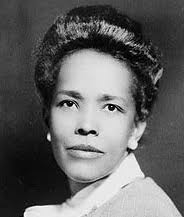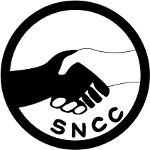SNCC: Student-driven Civil Rights Activism
It was the success of the sit-ins that brought the Student Nonviolent Coordinating Committee to national attention, making it one of the more successful civil rights organizations in America. 
A sit-in was a form of nonviolent protest that involved an African-American's sitting in a restaurant or at a lunch counter at which laws or customs prohibited that person's being served and then refusing to leave. The first known sit-in took place on Feb. 1, 1960, in Greensboro, N.C. Many people who participated in sit-ins were students; this was significant because the majority of participants in the civil rights movement up to that time had been adults. 
Early in 1960, a group of organizers, both black and white, formed the Student Nonviolent Coordinating Committee (SNCC) in Raleigh, N.C. Organizing the efforts was Ella Baker (right), a prominent member of the NAACP and, at the time, the executive director of another well-known organization, the Southern Christian Leadership Conference. The first chairman of the SNCC was John Lewis. The year after its founding, the SNCC played a major role in the Freedom Rides, a series of bus trips across the South during which African-Americans and white Americans practiced nonviolence in their protest of white-only facilities. Many Freedom Riders were met with violence; several buses were vandalized, and one was burned beyond use. 
The SNCC played a big role in promoting African-American voter registration and also lent its membership and its influence to preparations for the 1963 March on Washington. Thanks in large part to SNCC efforts, Congress passed and President Lyndon B. Johnson signed the Civil Rights Act of 1964 and the Voting Rights Act of 1965. In 1966, Stokely Carmichael replaced Lewis as chairman. The group began to take a more sympathetic view toward racial separation and some forms of violent protest. Carmichael it was who coined the phrase "Black Power." The first SNCC project to promote the idea of Black Power was a large voter registration in Lowndes County, Ala., which had entirely no registered African-American voters. During the next four years, efforts spearheaded by the SNCC resulted in the registration of more than 2,500 African-American voters. Some in the SNCC were affiliated with the Black Panther Party, itself initially a nonviolent group but one that ended up practicing violence in the name of their cause. The SNCC in 1969 changed its name to the Student National Coordinating Committee, to eliminate the word "nonviolent." By that time, H. Rap Brown had replaced Carmichael as organization chair. The SNCC was disbanded in the early 1970s, after losing members either to the Black Panther Party or because of the switch to more violent means of protest. Funding had dried up as well. Among the more famous members of the SNCC were Marion Barry, Julian Bond, Kathleen Cleaver, Carolyn Daniels, James Forman, Fannie Lou Hamer, Amzie Moore, Bob Moses, Diane Nash, Kathleen Neal, Rubye Robinson, and Charles Sherrod. |
|
Social Studies for Kids
copyright 2002–2025
David White





